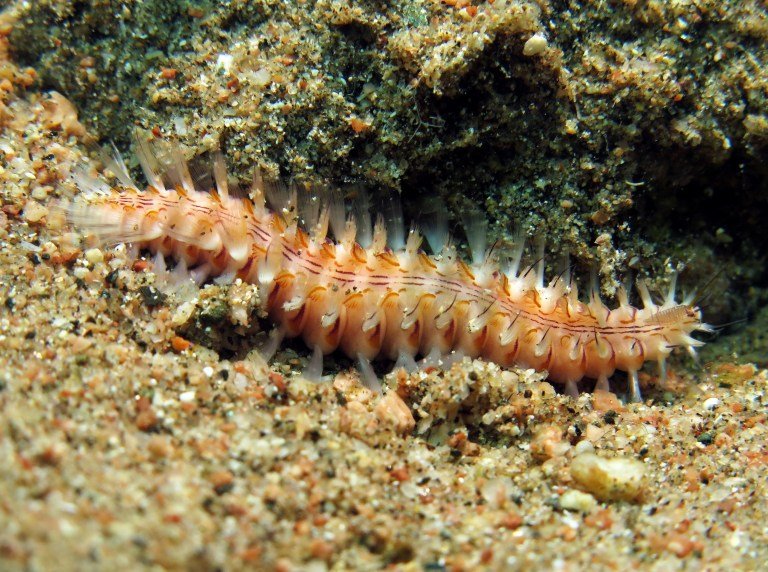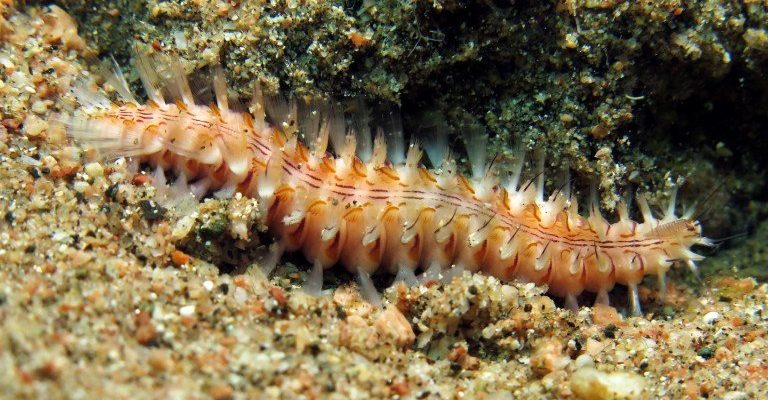
Bristle worms, also known as polychaetes, are part of a larger family of worms that play a really important role in marine ecosystems. They’re the cleanup crew of the sea, munching on organic matter and recycling nutrients. But when it comes to freshwater and brackish habitats, things get a bit tricky. So, are bristle worms adaptable enough to make a home in these environments? Let’s explore their characteristics and habitats to find out.
What Are Bristle Worms?
Before diving into their adaptability, it’s essential to understand what bristle worms are. They belong to the class Polychaeta, a group of worms characterized by their bristle-like structures called chaetae. These bristles help them move and burrow into the sand or mud of their aquatic habitats.
Bristle worms are usually segmented and can vary significantly in size, from just a couple of millimeters to over a meter long. You might spot them in coral reefs, estuaries, or even muddy bottoms of the ocean. They’re often brightly colored, which can make them visually appealing but also serves as a warning to predators about their potential toxicity.
Let’s break down some common types of bristle worms:
- Fire Worms: These are notorious for their painful sting if handled. They’re often bright red or orange.
- Polychaetes: These are more general types of bristle worms, found in various marine environments.
Understanding their biology helps when we think about where they can live.
Bristle Worms in Marine Environments
Bristle worms are quite at home in saltwater environments. They thrive in areas rich in nutrients, often found in sediments on the ocean floor or living in coral reefs. Their ability to adapt to different marine conditions is fascinating; they can be found in everything from shallow coastal waters to deeper oceanic regions.
One of the key factors influencing their presence in these environments is **salinity**. Bristle worms are adapted to high saline levels, which means they’ve got specialized gills for oxygen exchange and specific enzymes for breaking down organic matter in those conditions. This incredible adaptability allows them to survive where other creatures might struggle.
But what does this mean when we start talking about freshwater or brackish environments? Do these worms have what it takes to handle the change?
Freshwater vs. Brackish Environments
Freshwater refers to bodies of water with very low salt concentration, like lakes and rivers, while brackish water contains a mix of salt and freshwater, often found in estuaries where rivers meet the ocean. This is important because bristle worms are used to fluctuating saline levels in saltwater, but freshwater is a different ballgame.
In freshwater environments, the lower salinity can create a challenge for bristle worms. While some species of worms can adjust to lower salinity levels, they usually come from different families that are more suited to freshwater life, like oligochaetes (think earthworms).
Here’s the thing: **bristle worms** are generally not equipped to live in freshwater. They need that salty environment to thrive and may not tolerate the significant change in salinity found in freshwater habitats.
Can Bristle Worms Survive in Brackish Water?
Now, let’s talk about brackish water, the mixed bag that might seem like a compromise. Some bristle worm species can survive in brackish conditions, especially those that naturally inhabit estuaries. These environments have fluctuating salinity due to tides and freshwater inputs, making them a unique place for certain bristle worms.
For example, some polychaetes have adapted to thrive in brackish waters, where they can feast on detritus and algae. They’ve got the versatility that many freshwater organisms lack and can handle the changes in salinity better than their strictly marine cousins.
So, if you find yourself near an estuary or brackish tidal pool, keep an eye out. You might just spot some bristle worms mingling with their brackish friends!
Exploration of Species Adaptation
It’s incredible to see how different species adapt to their environments. Some polychaete species have shown flexibility in their habitat choices. For instance, the **Nereis** genus includes worms that can be found in both brackish and marine environments. They’ve developed the ability to cope with varied salinity levels, thanks to their more tolerant physiology.
In contrast, other bristle worm species are firmly rooted in saltwater habitats. Imagine it like trying to switch from cooking with rich spices to bland fare overnight; not every worm can handle that shift. The metabolic processes that help them thrive in salty water just don’t translate to the sweet, fresh stuff.
This adaptability highlights the beauty of nature. Different species have unique qualities that enable them to succeed in their chosen environments, whether that’s the open ocean or the mix of fresh and saltwater.
Why It Matters
You might be wondering why this topic is important at all. Understanding where bristle worms can live helps us learn more about the health of aquatic ecosystems. If bristle worms can thrive in brackish areas, it could point to a more complex and diverse marine environment.
Moreover, bristle worms play a crucial role in the food web, serving as food for larger animals. By keeping tabs on their habitats, we can gauge the effects of pollution, climate change, and habitat destruction on these vital ecosystems.
Plus, if you’re into marine biology or just love the ocean, knowing about these creatures adds a layer to your understanding of marine life. It’s a little piece of the puzzle that can help paint a bigger picture of how nature works.
In conclusion, while bristle worms are extraordinary creatures of the sea, their habitat preferences are pretty clear. They thrive in saltwater and, to an extent, can adapt to brackish environments, but freshwater is usually off-limits for them. Their incredible adaptability tells us much about the ecosystems they inhabit and the diverse life forms swimming around us.
So next time you’re at the beach or walking along a riverbank, take a moment to appreciate the different life forms around you. Nature is full of surprises, and sometimes, it’s the smallest beings that have the biggest roles to play in the ecosystem! Whether you’re an enthusiast or just curious, the world of bristle worms is a fascinating aspect of marine biology that enriches our understanding of life in water. Happy exploring!

